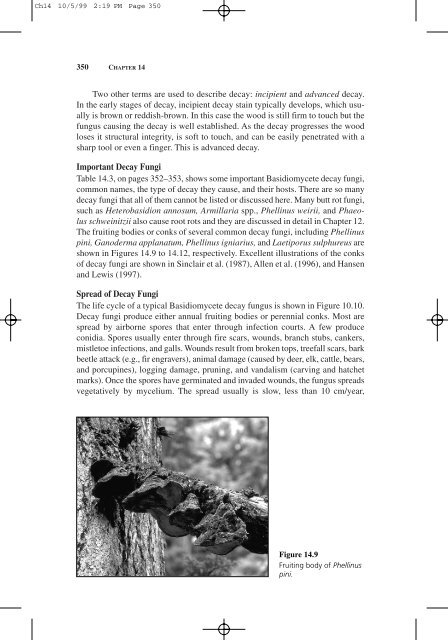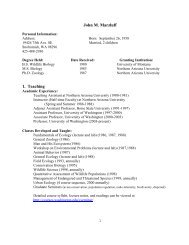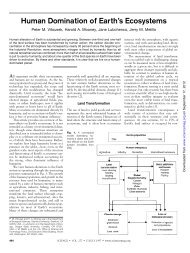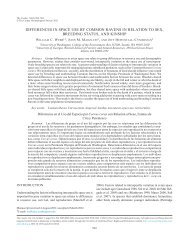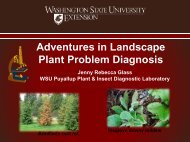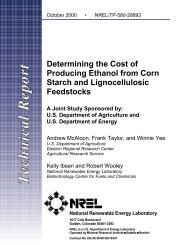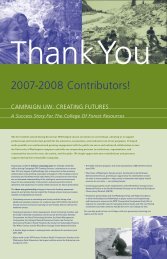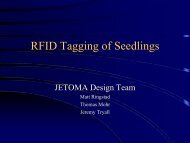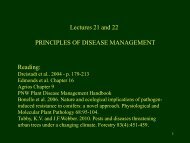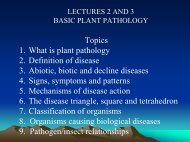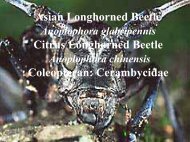You also want an ePaper? Increase the reach of your titles
YUMPU automatically turns print PDFs into web optimized ePapers that Google loves.
Ch14 10/5/99 2:19 PM Page 350<br />
350 CHAPTER 14<br />
Two other terms are used to describe decay: incipient and advanced decay.<br />
In the early stages of decay, incipient decay stain typically develops, which usually<br />
is brown or reddish-brown. In this case the wood is still firm to touch but the<br />
fungus causing the decay is well established. As the decay progresses the wood<br />
loses it structural integrity, is soft to touch, and can be easily penetrated with a<br />
sharp tool or even a finger. This is advanced decay.<br />
Important Decay Fungi<br />
Table 14.3, on pages 352–353, shows some important Basidiomycete decay fungi,<br />
common names, the type of decay they cause, and their hosts. There are so many<br />
decay fungi that all of them cannot be listed or discussed here. Many butt rot fungi,<br />
such as Heterobasidion annosum, Armillaria spp., Phellinus weirii, and Phaeolus<br />
schweinitzii also cause root rots and they are discussed in detail in Chapter 12.<br />
The fruiting bodies or conks of several common decay fungi, including Phellinus<br />
pini, Ganoderma applanatum, Phellinus igniarius, and Laetiporus sulphureus are<br />
shown in Figures 14.9 to 14.12, respectively. Excellent illustrations of the conks<br />
of decay fungi are shown in Sinclair et al. (1987), Allen et al. (1996), and Hansen<br />
and Lewis (1997).<br />
Spread of Decay Fungi<br />
The life cycle of a typical Basidiomycete decay fungus is shown in Figure 10.10.<br />
Decay fungi produce either annual fruiting bodies or perennial conks. Most are<br />
spread by airborne spores that enter through infection courts. A few produce<br />
conidia. Spores usually enter through fire scars, wounds, branch stubs, cankers,<br />
mistletoe infections, and galls. Wounds result from broken tops, treefall scars, bark<br />
beetle attack (e.g., fir engravers), animal damage (caused by deer, elk, cattle, bears,<br />
and porcupines), logging damage, pruning, and vandalism (carving and hatchet<br />
marks). Once the spores have germinated and invaded wounds, the fungus spreads<br />
vegetatively by mycelium. The spread usually is slow, less than 10 cm/year,<br />
Figure 14.9<br />
Fruiting body of Phellinus<br />
pini.


